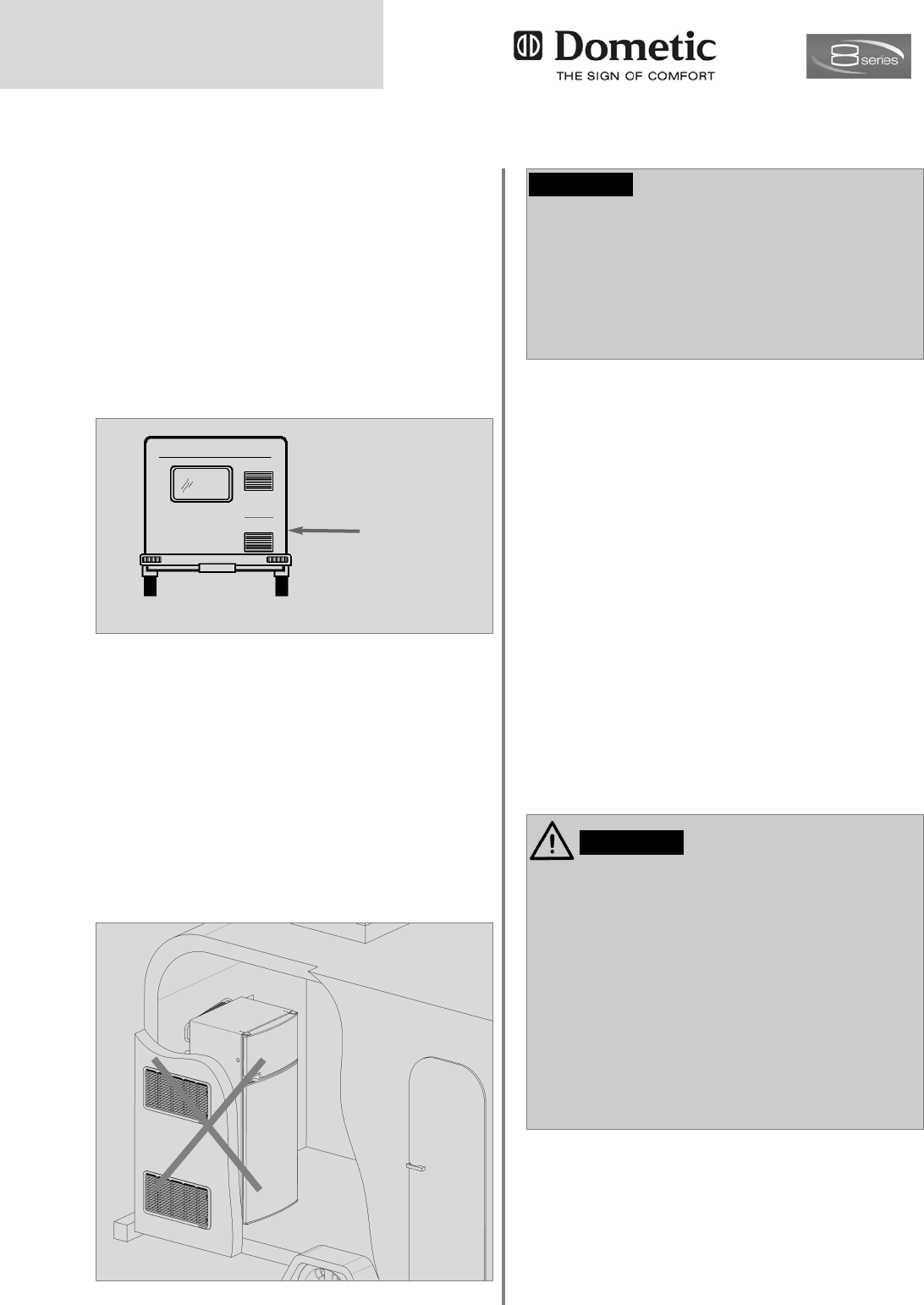
10
Installation
Another unfavourable method of rear installation
is to install the air intake and exhaust grilles (Fig.
9) at the side wall of the recreation vehicle. The
air-heat recirculation is very restricted which
means that heat exchangers (condenser, absor-
ber) cannot be adequately cooled. The optional
method of an additional air vent grille installed in
the floor also exhibits an insufficient air flow duct.
Fig. 5
Air vent grille
not blocked!
OK!
4.1.2 Rear installation
Rear installation often causes an unfavourable
installation arrangement, as ideal ventilation
cannot always be assured (e.g. the lower venti-
lation grille is covered by the bumper or the rear
lights of the vehicle!). The maximum cooling per-
formance of the aggregate is actually not availa-
ble.
The maximum cooling performance is not
available! Do not apply this installation
method, as it does not provide proper ven−
tilation! Please refer to the description in
section 4.2.
CAUTION!
4.1.3 Draught-proof installation
Refrigerators in motorhomes, caravans or other
vehicles must be installed in a draught-proof
manner (EN 1949). This means that the combu-
stion air for the burner is not taken from the
living space and that exhaust fumes are preven-
ted from entering the living space.
Adequate sealing between the back of the refri-
gerator and the vehicle interior has to be provi-
ded.
Dometic strongly recommend using a flexible
sealing for this purpose, in order to facilitate
future removal or installation of the appliance
during maintenance.
By no means use durable sealing com-
pounds, fitting foam or similar material to
realise draught-proof installation of the
refrigerator! Do NOT use any easily inflam-
mable materials for sealing (in particular
silicon sealing compound or similar). Risk
of fire! The device manufacturer's product
liability and warranty shall lapse if such
materials are used.
WARNING!
Dometic Refrigerators of RM8xxx Series feature
a groove running all around outside and bottom
side to facilitate the insertion of such flexible lip-
ped seals (see next figures).
Fig. 6


















